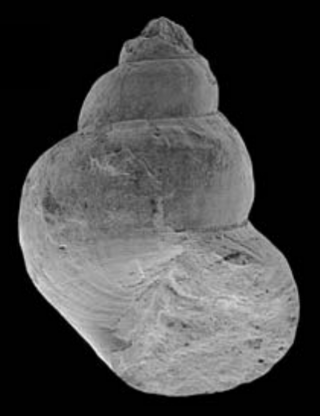
Kiwa hirsuta is a crustacean discovered in 2005 in the South Pacific Ocean. This decapod, which is approximately 15 cm (5.9 in) long, is notable for the quantity of silky blond setae covering its pereiopods. Its discoverers dubbed it the "yeti lobster" or "yeti crab".

Kiwa is a genus of marine decapods living at deep-sea hydrothermal vents and cold seeps. The animals are commonly referred to as "yeti lobsters" or "yeti crabs", after the legendary yeti, because of their "hairy" or bristly appearance. The genus is placed in its own family, Kiwaidae, in the superfamily Chirostyloidea.

The esophageal glands are glands that are part of the digestive system of various animals, including humans.

Incirrata is a suborder of the order Octopoda. The suborder contains the classic "benthic octopuses," as well as many pelagic octopus families, including the paper nautiluses. The incirrate octopuses are distinguished from the cirrate octopuses by the absence in the former of the "cirri" filaments for which the cirrates are named, as well as by the lack of paired swimming fins on the head, and lack of a small internal shell.

Neomphaloidea is a superfamily of deep-sea snails or limpets, marine gastropod mollusks. Neomphaloidea is the only superfamily in the order Neomphalida.

Chrysomallon squamiferum, commonly known as the scaly-foot gastropod, scaly-foot snail, sea pangolin, or volcano snail is a species of deep-sea hydrothermal-vent snail, a marine gastropod mollusc in the family Peltospiridae. This vent-endemic gastropod is known only from deep-sea hydrothermal vents in the Indian Ocean, where it has been found at depths of about 2,400–2,900 m (1.5–1.8 mi). C. squamiferum differs greatly from other deep-sea gastropods, even the closely related neomphalines. In 2019, it was declared endangered on the IUCN Red List, the first species to be listed as such due to risks from deep-sea mining of its vent habitat.

Peltospiridae is a small family of gastropods that used to belong to the clade Vetigastropoda, but is now included in the clade Neomphalina

Lepetodrilus is a genus of small, deep-sea sea snails, hydrothermal vent limpets, marine gastropod mollusks in the family Lepetodrilidae.

Hirtopelta is a genus of sea snails, marine gastropod mollusks in the family Peltospiridae.

Lirapex is a genus of sea snails, marine gastropod mollusks in the family Peltospiridae.

Bruceiella is a genus of sea snails, marine gastropod mollusks in the family Skeneidae.
Iheyaspira is a genus of sea snails, marine gastropod mollusks in the family Skeneidae.

Provanna is a genus of sea snails, marine gastropod mollusks in the family Provannidae.

Gigantopelta chessoia is a species of deep sea snail from hydrothermal vents, a marine gastropod mollusk in the family Peltospiridae.

Lepetodrilus sp. East Scotia Ridge is an as yet undescribed species of small, deep-sea sea snail, a hydrothermal vent limpet, a marine gastropod mollusk in the family Lepetodrilidae.

Kiwa tyleri, the "Hoff crab", is a species of deep-sea squat lobster in the family Kiwaidae, which lives on hydrothermal vents near Antarctica. The crustacean was given its English nickname in 2010 by UK deep-sea scientists aboard the RRS James Cook, owing to resemblance between its dense covering of setae on the ventral surface of the exoskeleton and the hairy chest of the actor David Hasselhoff. The 2010 expedition to explore hydrothermal vents on the East Scotia Ridge was the second of three expeditions to the Southern Ocean by the UK led research consortium, ChEsSo.

Gigantopelta aegis is a species of deep sea snail from hydrothermal vents, a marine gastropod mollusk in the family Peltospiridae.
Elmira is a genus of prehistoric snails, gastropod molluscs.
Kemp Caldera and Kemp Seamount form a submarine volcano south of the South Sandwich Islands, in a region where several seamounts are located. The seamount rises to a depth of 80 metres (260 ft) below sea level; the caldera has a diameter of 8.3 by 6.5 kilometres and reaches a depth of 1,600 metres (5,200 ft). The caldera contains several Hydrothermal vents, including white smokers and diffuse venting areas, which are host to chemolithotrophic ecological communities. The seamount and caldera, which were discovered by seafloor mapping in 2009, are part of the South Georgia and the South Sandwich Islands Marine Protected Area.














